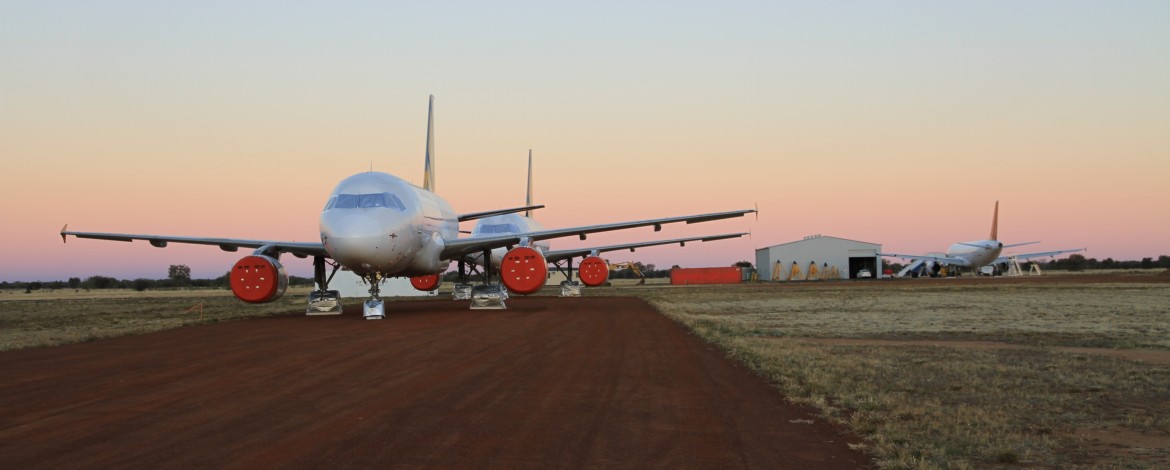By Hugh Arnold (Australian Financial Review)
The dry heart of Australia is an unforgiving climate. In Alice Springs, however, the almost moistureless atmosphere average humidity 25 per cent, surprisingly low dust, low cyclone, low rainfall was a key factor for Tom Vincent six years ago when he found just the right property for his 100 hectare aviation ranch.
Vincent proudly and accurately describes Asia Pacific Aircraft Storage (APAS) as the first dedicated aircraft storage and parting-out facility for the Asia Pacific region” (parting-out being the certified dismantling and selling of aircraft parts).
Our facility was constructed, finished last year and since then we’ve obtained our CASR Part 145 maintenance approval. We now have the storage program and the parting out and decommissioning services for aircraft that potentially have been sold for their components.
That includes removal of engines, avionics instruments, high value items that will be bench tested, tagged and be put back onto other aircraft in service.”
Positioned right next to Alice Springs Airport’s runway and terminal, APAS already has eight aircraft currently on site and another six or more due by January. Alice Springs Airport has the added advantage of being open 24/7 with no restrictions on flight paths or noise abatement problems.
Our target market is clearly the Asia Pacific region,” Vincent says. It’s simply because it’s the ease of access we present to that target market. We’re five hours from Singapore. We’ve got the correct climatic conditions and the right environment for protecting the aircraft. And Asia-Pac is forecast by both Boeing and Airbus to be the highest growth region in the world.”
He agrees the proliferation of low cost carriers in Asia is a good sign for the aviation business generally.
There’s a significant pipeline of new aircraft that are rolling off both Airbus and Boeing production lines. Operators want the new aircraft because there’s funding available for them; and secondly they deliver significant savings to their bottom lines particularly when fuel has been high.”
Vincent estimates a new aircraft can save up to 30 per cent on their fuel costs.
So when you can fund it and it’s cheaper to operate you’re going to have a desire to go into a newer aircraft and that then presents the issue, what are you going to do with your aged aircraft?” he asks.
That’s where we come in when there might be over capacity issues. The aircraft might be positioned here until those capacity issues pick up. Maybe the aircraft no longer make economic sense to operate as a going concern but there’s still significant value left in the airframe and components.”
Vincent is a former Brisbane lawyer with Blake Dawson Waldron (now Ashurst), who altered course for the UK to play rugby union some years back and ended up at Deutsche Bank in London working in the distressed products trading and a lot of secondary market trading of bank debt and liquidation claims,” where he first looked at some aircraft leasing ownership structures.
We’ve now taken it from a concept into a real business that’s providing services to airlines throughout the region. Funding it, building it and then later commencing marketing with the airlines have all been significant steps.
I spend a lot of time going to see customers throughout Asia. Face-to-face time is important. And it’s not just a one-off meeting; it’s continual dialogue and developing a rapport with people so that people understand your product and the personnel involved,” Vincent insists.
You’ve got to have a good product and you’ve got to invest the time in fostering those relationships. Once you’ve fostered one or two, then the word of mouth becomes important.”
Source: Australian Financial Review (http://www.afr.com/news/world/oceania/making-business-take-off-in-alice-springs-20141128-11weld)
Accessed: 2 Dec. 2014 1:13pm

